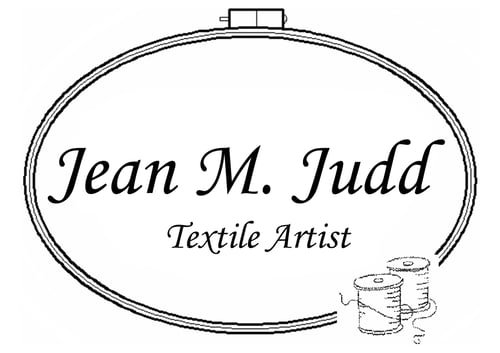Learn more about how artist Jean M. Judd uses architectural ironwork to rust dye fabric.
Architectural Rust Dyeing
Wisconsin textile artist Jean M. Judd began experimenting in November of 2009 with using architectural ironwork and rust as a medium for pigmenting and dyeing some of her own fabric to make into textile artwork for exhibition and commission pieces. Another process using scientific iron filings is being used in some of her environmental artworks including the Contaminated Water series and the Rusted Lace series. These are just a few samples of the yardage she is creating with the architectural ironwork process.
As the rust dyed fabric is transformed into finished textile artwork, these pieces are on the Designing with Rust sub-page. Please check back frequently for more samples and to see the finished artwork. This piece was used to construct Flaming Grapes which can be seen on the Designing with Rust Gallery.
This piece has been completed into a small wall art piece and is titled Rusted Grapes. You can see the piece on the Designing with Rust gallery.
The process is not quick, but it does lend itself to some very interesting designs. The ones above are representational images using one piece of architectural ironwork. Future experiments will hopefully produce more abstract designs. "Rust Dyeing" really isn't dyeing, but pigment application with rust being the catalyst. A mordant, or fixative process, is used to stop the rusting process so that the fabric isn't eventually eaten away by the remaining metalized pieces. Many artists either forget this step or don't know about it and proceed to have fabrics that start to develop holes where the rusting has taken place. This piece became Rusted Vines and Hinges and can be seen in the Design with Rust gallery.
Some of the things I've been using in the process include architectural ironwork, rusted car parts including a radiator shell from a 1920-1930s vehicle, a clutch plate from a tractor, and other found items that had rust already forming. As the rusted iron is used, the images become more distinct with each application of rust pigment. The excitement of seeing how each piece transforms as the rusting occurs is what makes this process so interesting. Parts of the process can be controlled, but much of it is beyond the artist's influence and the application of pigment takes on a life of its own. See Shadow of the Past in the Designing with Rust gallery for the completed artwork.
